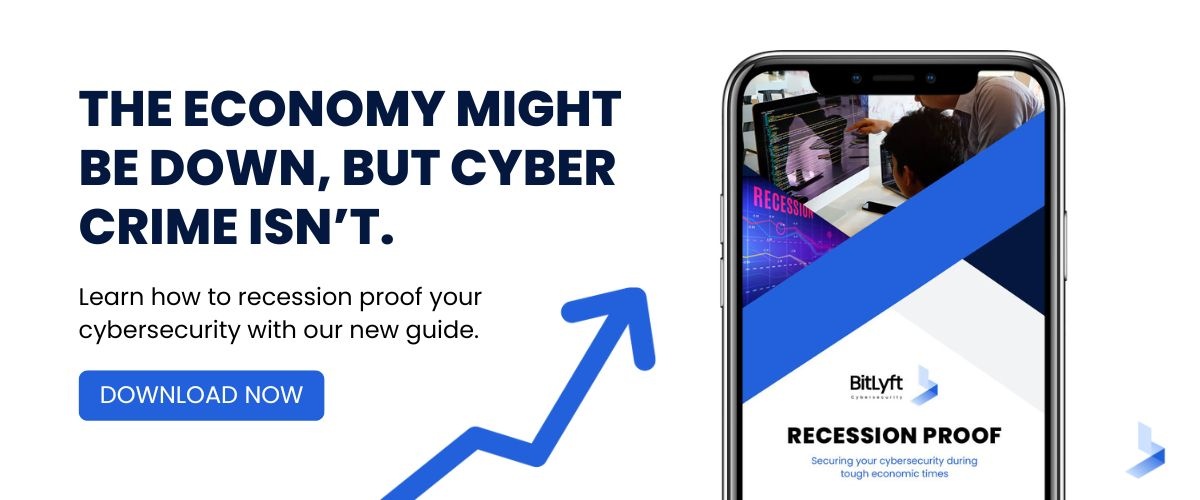Top Cybersecurity Threats facing Manufacturers

 By
Jason Miller
·
6 minute read
By
Jason Miller
·
6 minute read
Cybersecurity for manufacturers couldn’t be more paramount than it is today, with attackers coming up with new ways to exploit systems every day. A 2019 Manufacturing and Distribution Report showed that at least half of all manufacturing companies have been duped into data breaches in the last year!
These are staggering numbers that definitely need to be addressed. With the Internet of Things becoming more and more of a reality, there is more room than ever for hackers and malicious actors to perform data breaches on unsuspecting companies.
The WannaCry Ransomware Attack of 2017
One of the biggest and most well known attacks, “WannaCry” happened just two short years ago in 2017, and left many companies in hot water for quite awhile to come.
It targeted and exploited unpatched Microsoft Windows computers by encrypting all of the important data on them, and then demanding companies, including several manufacturing companies, send a ransom payment to a specified Bitcoin address to unlock the files.
The WannaCry outbreak was stopped a few days after the spread started after Microsoft released emergency patches to affected systems, and a web developer discovered a kill switch in the ransomware’s code. These actions helped slow the spread of WannaCry to a slow trickle. However,
before it was stopped, WannaCry spread to more than 200,000 computers across the world in 150 countries, ultimately causing damages worth hundreds of millions to even billions of dollars. This is a great example as to why every company should make sure their systems are up to date with the latest security patches and running the latest versions of any software.
If you aren’t sure about the security of your system, BitLyft can provide an assessment and work with you to develop all the necessary protocols to make your cyber security system as automated, efficient, and up to date as possible.
What Are the Global Practices in Cybersecurity for Manufacturing?
With the rise of cyber attacks, along with hackers and malicious actors getting more and more creative with ways to pull of their digital schemes, the manufacturing industry need to up their security game to stay one step ahead of attackers.
Attackers tend to leverage a few different attack vectors to achieve their goals. Hacks such as identity theft, phishing, and the compromise of enterprise websites are a few ways hackers can take over mission-critical systems.
Manufacturing companies used to not take cyber attacks as seriously, as most people assumed such hacks were usually going to be directed at financial institutions. Cyber attacks such as WannaCry and others have taught us that the opposite is true, however. The simple fact is that every major organization with an internet presence is threatened in this digital age. Adhering to some tried and true cybersecurity practices can help make sure that your organization is better protected!
There are a few practices that every manufacturing organization should follow. Cybersecurity for manufacturers doesn’t have to be hard, but it does need to be done! Everyone needs to make sure their systems are protected, and manufacturers are no exception to this rule. Protect your data and your organization with some of these security tips:
- Be aware of phishing threats. Phishing is still one of the most common ways hackers get into any organization’s systems. Hackers employing phishing techniques count on at least one person within the organization not being up to speed on best cybersecurity practices. One person clicking on a malicious link in an email can be all it takes for hackers to break into corporate systems. Manufacturers should make sure all employees in their companies are privy to phishing threats and know what to do when they encounter a suspicious link or file.
- Ensure all systems are up to date on security software. This is true for anyone who owns a computer or smartphone, but is doubly true for organizations who rely on their systems for continued operations. Security professionals should make sure all computers, phones, and other tech employed by the organization is up to date on security patches and software.
- Ensure websites are safe from compromise. Compromising web pages is another easy way for hackers to damage organizations. Getting into databases and stealing information, inserting dangerous and malicious links on websites are just a few ways that attackers can do damage by compromising websites. Security professionals should make sure that websites owned by the organization are protected from attack vectors such as cross-site scripting, SQL database takeover, and other easy-to-overlook ways to take over sites.
- Have a plan of action in place. Should the worst happen and an organization is hit with a cyber attack, proper incident response plans should be in place. Have a plan of action for every type of attack, and review these plans regularly and adjust them with newer security practices if necessary. A good incident response plan is a battle plan for the entire organization!
What are Some Common Challenges to Cybersecurity for Manufacturers?
While cybersecurity should be a top concern for anyone in the manufacturing industry, there are still several challenges facing security professionals in the industry. Dependence on certain technologies, along with newer technologies making their way into organizations, can be setbacks to cybersecurity and pose certain threats.
- Operational technologies. Operational technologies are physical hardware or software that detect or help control physical devices that are mission-critical in the organization. Organizations, especially those in manufacturing, are highly dependent on these technologies for the continued successful operation of their business. Some of these technologies can be a looming threat to the continued cybersecurity practices of companies. All operational devices should be assessed and audited for security by security professionals in their respective organizations to ensure the safety of their operational tech from inside threats and outside attacks.
- Internet of Things devices. Internet of Things devices are a newer trend for many organizations, but many folks don’t realize how big of a security risk they can present. Internet of Things devices often don’t have their security settings changed after being set up, and many of them can be easy to take over and control for hackers if they still have factory security settings. It is highly important to audit all Internet of Things devices and change their passcodes and other security measures after they are taken out of the box for the first time.
- The continued pressure to automate. Most organizations nowadays are doing everything they can to automate and digitize, removing the human element from many professional jobs. While this can be a great idea for many industries, it is important to remember that automation can work against you if things aren’t secured properly. If a process is completely automated and hackers gain control of the automation process, they would gain direct access to enterprise operations and could do tremendous damage.
- Having several different locations or plants. Being a big organization with several different locations or plants can be a great thing, but it can also be bad for security. Security professionals at each location should know what technologies each is using, and adapt their risk management and incident response plans with that knowledge in mind. Should an attack occur, it is imperative that security professionals at each location are able to sync up in real time to solve the problem as fast as possible.
- Know the supply chain and its vulnerabilities. Risk management also applies to the supply chain of any organization. Organizations should implement strategies based on risk assessment with their supply chain partners to identify and reduce vulnerabilities. A 2011 survey showed that a staggering 559 companies in 65 different countries had encountered at least problem with supply chain disruptions during the course of the year.
- Increases in global trading. Organizations who trade globally can increase the risk of cyber attacks stemming from another nation. The more countries a nation does business with, the larger the attack vector can be. This is a sad reality of international business in the current age, but it is one that must be considered. Countries can now attack other countries with just a few keystrokes.
- Manufacturers are quick to promote a health and safety culture, but not so quick to promote a strong security culture. As a manufacturing organization, it is a great and noble cause to care for the safety and well-being of employees, but it is equally important to foster an importance of security across the organization. Ensure every employee is trained in security practices, including little things like phishing. If every employee is trained in security, they will be less likely to be a walking security vulnerability.
So, What’s the Solution?
Everyone in the manufacturing industry needs to take cybersecurity seriously. All it takes is one serious cyber attack to halt a company’s operations for days, and that is something that can seriously damage any company financially and reputationally.
The solution, it turns out, is rather simple. A good and solid risk management approach to cybersecurity practices is the best option. Manufacturers may not spend hundreds of millions of dollars on cybersecurity like the financial industry will. However, every manufacturing company can still have a great approach to risk management.
Have a plan of action for any potential cyber threat, and evaluate and review it every year, changing it to make it applicable to newer threats if necessary. A good and cost-effective way to go about this is to have a managed security service for your organization, with the best products on hand for monitoring and defending networks in real time.
Don’t let your organization fall victim to cyber attacks! With some of these tips, you will be better informed on cybersecurity practices for manufacturers. This will enable your organization to step up its security game in ways it hasn’t before, and protect your organization and its data from hackers and digital attacks!
BitLyft helps businesses just like yours with risk assessment and putting protocols in place to mitigate risks in the future.
